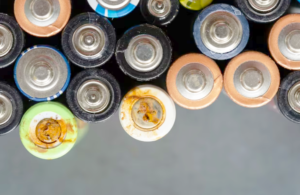
Have you ever found an old flashlight or a remote control, only to open it and see the battery corrosion that has been hiding inside? Cleaning this mess is important so that your device has the chance to work again. You should make sure there is no residue left since it may prevent the functioning of the item even if you place new batteries in it.
Battery corrosion should be cleaned as soon as you discover that the batteries in the box are leaking. We usually use a battery-powered gadget until the battery dies and it no longer works. You should inspect the battery casing and battery in these types of items on a regular basis to ensure there is no leaking or corrosion.
Before you begin, make sure you protect your skin, eyes, and mouth. Even though the cleaning process is simple and usually does not take long, contact with any of the chemicals can irritate you. Cover the surface that you will be using with newspapers, plastic foil or paper towels.
Cleaning alkaline batteries
- Remove the batteries – Remove all batteries from the device and dispose of them. Do not attempt cleaning any of them (even the ones that are not corroding but are just covered in mess). You can place the batteries in a plastic bag and safely dispose of them later or give them for recycling. If you will be tossing them in the garbage bin, make sure they are wrapped in plastic since they may cause soil contamination.
- To neutralise the corrosion – Pour a bit of white vinegar or lemon juice into a small bowl. Dip a cotton swab or an old toothbrush in the liquid and saturate the corrosion-stained area of the device.
- Once the acidic liquid you applied neutralises the corrosion, it will also loosen it and make it easier to get rid of. Grab a small brush and gently scrub away any residue that is left on the battery box. Make sure you reach all corners and small spaces.
- Dry the battery case – Make sure you thoroughly dry the battery area. Use a paper towel to remove most of the moisture, then leave the device without the lid on so it can completely air dry.
- For stubborn rust – If rust lingers on the device’s battery contact points, combine a tablespoon of baking soda with a few drops of water, lemon juice, or vinegar in a small basin. Rub the contact locations with a cotton swab dipped in the mixture. As any rusty residue is transferred, switch to a new cotton tip. When no more residue is transmitted, thoroughly wipe the contact places with a clean towel to remove any baking soda remains.
- Replace the batteries – Place new batteries (make sure they are not expired) and begin using your device once again.
For nickel-cadmium or other rechargeable batteries
- Remove and dispose of the batteries – Even if this type of battery is rechargeable, do not attempt to try that if they have leaked. Remove them from the battery case, place them in a plastic bag and recycle them or simply dispose of them in the regular garbage bin.
- To neutralise the potassium hydroxide in the corrosion, sprinkle dry baking soda inside the battery case. Pour the powder into a garbage receptacle to be disposed of.
- To thoroughly clean the battery case – Make a paste by mixing baking soda and a few drops of water. Use a cotton swab to apply it to the battery contact points. Gently scrub this area until all rust is gone, then use a paper towel to thoroughly dry. Just in case, let it sit open for a while in order to ensure it is properly dry.
- Replace the batteries – Place new batteries (make sure they are not expired) and begin using your device once again.
How to take care of lithium battery corrosion
Lithium batteries, which are commonly found in cell phones and laptop computers, rarely leak. But when they do, it is extremely toxic and highly flammable. Do not attempt to clean the corrosion from a lithium battery. For proper lithium battery disposal, consult a hazardous waste professional.
Tips on battery maintenance and care that will help prevent their leaking
- Store batteries in a dry and cool place.
- Whenever you are not using a certain device for a while, remove the batteries from it until you need it again.
- Make sure the batteries you use are not expired and avoid mixing new and old batteries in the same device.
- Remove the battery from items you know you will only use sometimes and tape it to the outside of the device with painter’s tape. When a battery is not in the device, it is not constantly pressured, and it is simple to replace it when necessary.